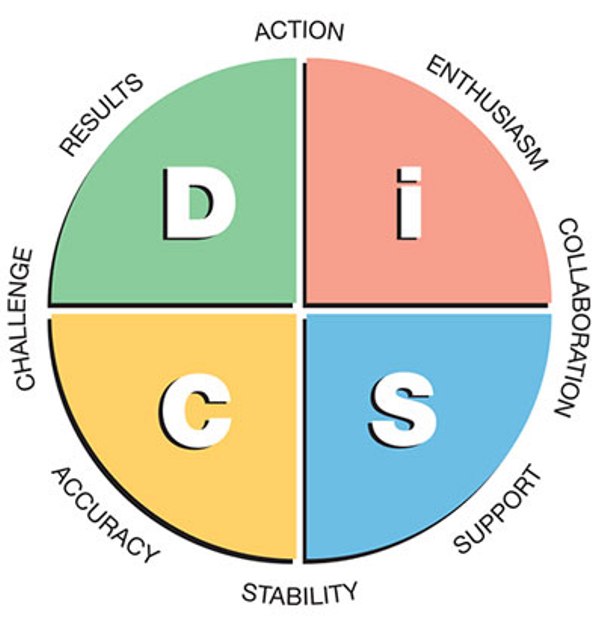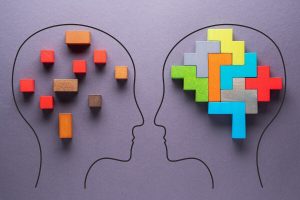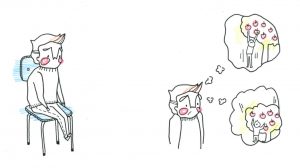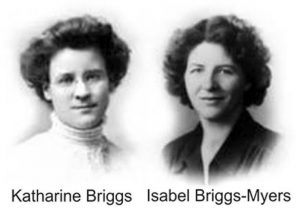The DISC personality assessment tools, based on the DISC model, are the most used coaching tools. So that we can understand them better, we will begin by reviewing the DISC model created by William Moulton Marston . We will also take advantage of this to highlight the difference between a personality model as DISC model and the assessment tools derived from it.

DISC personality assessment tools, the most extended and used in coaching and development of people
We continue, then, this series on tools for coaching with the DISC personality evaluation tools because they are, by far, the most used in the development of personal leadership.
One of the reasons for such widespread use is that it has been a long time since the creation of the first of the DISC personality assessment tools.Almost 70 years.A long time to be consolidated.Another reason is that they are open-use.That is, anyone can be trained to use any of the versions of the DISC personality assessment tools.
On the other hand, understanding the DISC model and the DISC personality evaluation tools will allow us later (in this post series) to make a comparison of the DISC personality model and derived tools with the NeuroQuotient model and tool (the neuro tool).
What is the difference between a personality model and the personality tools?
Another reason to prioritize DISC personality assessment tools is that it can serve as an example to distinguish between a personality model and the tools.
We can remember that a personality model is useful to explain the different personalities through some parameters. A model is a simple structure, which helps us to explain something as complex as personality.
The evaluation tools (or instruments), as the DISC evaluation tools, are based on a model, as the DISC personality model. The tools are useful for us to identify (measure) which personality is defining better each person.
We can see that there is only one DISC model and, on the contrary, several DISC personality assessment tools.
History and variety of DISC personality assessment tools
The DISC model was created by William Moulton Marston (1893-1947) in the second half of the 20s of the last century.By the way, Marston, was also the developer of a first type of lie detector (polygraph), based on the measurement of blood pressure.
The first of the DISC personality assessment tools was designed by the organizational psychologist Walter V. Clarke and goes back to around 1950. Curious that, at the same time, Arnold S. Daniels created Predictive Index , a very powerful tool for selection and development that It can only be used in organizations. Predictive Index is not open-use. And, originally, at least, it didn’t follow exactly the DISC personality model; we believe.
Later, several improved versions of DISC personality assessment tools based on the original Marston DISC model appeared and are still emerging.Each new version usually incorporates a different type of measurement questionnaire and improves, and extends, the information it provides.
One of the last versions of the DISC personality evaluation tools is Everything DISC .
We must also take into account that some of them do not keep the name of DISC, for example, the PPA (Personal Profile Analysis of Thomas International ).
We have just quoted some of the most important DISC personality assessment tools.But, we can already see that the DISC model and the different versions of the tool are very distant in time.On each of the DISC personality assessment tools we can find a lot of information (on the internet).For this we will approach them through what they have in common, the DISC model.
The DISC model on which the DISC personality assessment tools are based
William M. Marston introduced for the first the DISC model in the book Emotions of Normal People (London, 1928).We will try to extract the most relevant.What, from our point of view, is key to understand it and the DISC personality assessment tools.
In addition, at the base of the DISC model there is something that caught our attention. Interestingly, W.M. Marston talks about psycho-neural hypotheses of emotion. Actually, he is defining a psychobiological model that relates the emotions with the brain’s substrates. We can see it later when discussing the motor self and the motor estimuli. In the book we can even find a drawing interpreting a synapse.
But, the most remarkable thing is what explains us about the expression of emotions on the behaviour.He says that it can be classified into four main types, derived from how each one perceives themselves respect to the environment and how each perceives the environment.Marston named these four personality types as: Dominance (D), Inducement (I), Submission (S) and Compliance (C).The four letters for the DISC model.
We prefer to write only the four letters of the acronym and to avoid the names. This is because each person may be prone to give their own initial meaning to each word and then it may be difficult to go back to the deep meaning.We run the risk of getting away from the DISC model, just like WM Marston created it.Later we will see the different meanings of each personality type.
On the other hand, we want to avoid the risk of labelling people.Speaking of personality, it is better to define each type by the personality traits, by the behaviours that are more representative of them.
The keys of the DISC personality model. The motor self and the motor stimuli.
To support the DISC model, Marston speaks of two thrusters of emotion: the motor self and the motor stimuli. He defines the motor self as the tonic synaptic excitation that exists in the organism. While the motor stimuli are the phasic motor impulses that join at the synapses with the motor self.
In this conjunction, the motor stimuli can act as an ally or an antagonist to the motor self. On the other hand, the synaptic load of the motor stimuli may be lower or higher than the motor self one. In the first case, when it is lower, increases the pre-existing intensity of the motor self, while, in the other (higher) reduces it.
Finally, according to Marston, these relationships between the motor self and the motor stimulus are translated into the dimensions of the personality DISC model.
An individual, on the one hand, can perceive himself superior or inferior to the environment (self-motor superior or inferior to motor stimulus).On the other side can perceive the environment as an ally (favourable) or a threat (antagonist).The four types of expression of emotion with behaviour according to Marston DISC model are as follows:
| Antagonist environment | Allied environment | |
| Self superior to the environment | Dominance State of exercising power | Inducement State of influence (move to act) in others |
| Self inferior to the environment | Compliance State of doing what is right. | Submission State to obey, do what others command. |
Acronym in the DISC personality assessment tools
The acronym in the current DISC personality assessment tools is the same. However, the words differ slightly. We assume that the purpose was to avoid negative labels. When changing Submission for Stadiness, for example.
| Initial DISC Original Marston Current tools | D Dominance Dominance | I Inducement Influence |
| C Compliance Conscientiousness | S Submission Steadiness |
In the various current DISC personality test tools, the different dimensions are defined and made explicit with the following personality traits or most representative behaviours:
| Dominant Emphasis on the achievement of the own results, the benefit, with confidence in oneself. Direct Results oriented Self Starter Decisive Risk Taker | Influential Emphasis on influencing or persuading others.Open to relationships. Outgoing Enthusiastic Optimistic Trusting Talkative |
| Conscientious Emphasis on quality, precision, experience and competence. Analytical Prudent Meticulous High StandardsReserved | Stable Emphasis on cooperation, sincerity, tolerance, dependence on others Steady Understanding Patient Team player Good listener |
Once we have been able to see the DISC model on which the DISC tools are based, in DISC versus Neuroquotient we will assess their strengths, and, perhaps, some limitation, with which we can find ourselves.
Photo Credit: based photo Overview of the Everything DiSC Model




